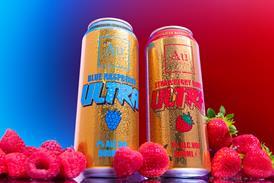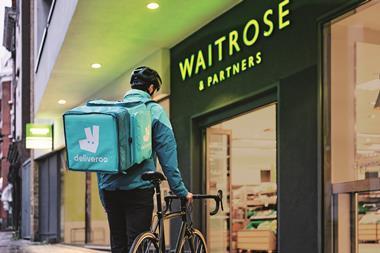A lorry carrying a consignment of Jaffa Cakes pulls up at a remote warehouse off the A1. The driver alights and disappears from view, while men in dark overalls load the truck with KitKats and seal it tight. The driver returns and continues on his journey to the Midlands under the scrutiny of a hi-tech satellite system.
This isn’t the title sequence of the latest Bond movie, but an example of transport collaboration – more precisely, United Biscuits and Nestlé working together to reduce food miles. The concept is simple; under the Efficient Consumer Response sustainable transport initiative, managed by IGD in the UK, the suppliers are encouraged to share lorry loads between factories and distribution centres where practical.
Until recently, transport collaboration schemes were seen as worthy rather than imperative. No longer. Miles mean money and vehicle sharing has steadily worked its way up the agenda, aided by the recession. Throw in the push for stockless supply chains and increased delivery frequencies (and therefore fuel bills), and “sustainable transport has never been more relevant”, says Simon Pearson, head of central logistics at Asda. “In fact, it’s such an important issue it’s now an executive board subject. As a business it can stop you from going under, help avoid redundancies and allow you to stay competitive.”
Asda’s most high-profile initiative is with Cadbury. The companies have started backhauling to a greater degree and Cadbury now uses Asda’s daily train from the Midlands to Scotland to carry stock north of the border. The pair estimate they are saving 310,000 road miles each year. “The move towards a stockless supply chain will force road miles on the UK supply chain,” says Pearson. “You don’t react to a more agile supply chain by running half-empty vehicles. Our role is to be the clever guys who work out ways to fill trucks.”
Tesco vehicles returning to its DC in Goole pass through Unilever's DC 20 miles away in Doncaster, picking up brands such as Dove, Lynx and Sure. The partnership has helped to save 500,000 road miles.
Unilever used to deliver to Asda's Washington depot daily, with 50% of return legs running empty, while Asda had empty vehicles returning to the north east after deliveries to the Midlands. The two found they were able to share journeys, reducing empty food miles by 80,000 per year.
In 2007, Asda was part of the first wave of conscripts to IGD’s ‘speed-dating’ workshops, which enable transport managers to identify where they are running half-empty trucks and look at opportunities to match up excess capacities. It was here that Nestlé and UB ticked each other’s boxes.
“We realised UB had a lot of factories in the north and lorries bringing stock south that didn’t always go back with full loads,” says Nestlé supply chain director Chris Tyas. “Conversely, UB had a lot coming from the south and going north.”
UB vehicles now stop at Nestlé’s Halifax and York sites to pick up product, and deliver it to Nestlé’s Bardon warehouse, in Leicestershire. “It’s a win-win situation for the environment and cost saving,” says Tyas. “It saves three journeys a week.”
Pearson agrees that the arguments for collaboration are compelling, especially in light of the economic downturn.
“The main goal is to remove waste from transport operations, but clearly one of the best things is that it’s great for the bottom line. Some people are unhappy that there’s a financial incentive, but I don’t see sense in that. I’m happy to shout about it – as long as the net result means reducing waste and removing miles.”
However, transport collaboration has yet to gain industry-wide commitment. The ECR initiative cut 53 million miles from the road network in 2007 and 2008, according to IGD. But this figure is tiny when set against the 1.25 billion road miles the 37 companies involved racked up in 2007.
Experts cite numerous barriers to its uptake. A key obstacle is the inward-looking culture that makes some businesses resistant to working with competitors. “In some cases there’s a feeling that it’s far easier to do these things alone,” says Tarun Patel, IGD’s head of supply chain.
Tyas argues that collaborating with a rival does not have to jeopardise competitive advantage. “We do compete on-shelf, but we don’t compete in the environment or on the truck,” he says. Nestlé and UB protect the integrity of new products by ensuring that trailers are loaded and sealed away from the view of drivers.
Other barriers require more practical solutions. “Some manufacturers use curtain-sided vehicles, while retailers often use tail-loaded. When you start sharing transport you end up with vehicles you can’t easily load,” says Patel.
But there are no barriers that can’t be surmounted, believes Pearson. “If you don’t want to do it, there are 101 reasons why it won’t work. People say that times are tough and it’s hard to keep a team focused on sustainability,” he says. “But you can’t be a logistics professional if you’re not constantly thinking about sustainability.”
That said, while some have been pro-active in seeking out collaborative opportunities, others are lagging behind – notably retailers. “From the manufacturers’ perspective, there’s a desire to see retailers collaborate, but there aren’t great opportunities because we’re running trucks in different directions,” admits Pearson.
Their lack of commitment pales into insignificance compared with another group’s, though. “The guys that really struggle are the third party logistics firms,” says Pearson. “There’s a conflict with them, because their income stream comes from running road miles. Miles that are saved are being taken away from a 3PL, so for them to get behind transport collaboration is a bit like turkeys voting for Christmas.”
Ian Keilty, head of business development at Booker, nevertheless believes 3PLs need to demonstrate greater commitment to collaborative initiatives. “The 3PLs own a great deal of food miles. It’s for them to get out of their contracted relationships with customers and look at the role they can play in collaboration.”
Attitudes are changing. Martin Taylor, managing director of Wincanton, insists 3PLs are already doing their bit in Scotland and the south west where density of space is high, for instance. “For every empty leg, we find a similarity of frequency between two retailers and try to bring the legs together,” he says. Wincanton, he adds, also helps businesses to share warehousing where there is redundant space.
As the recession deepens, more businesses will wake up to the benefits of collaboration. It’s already happening. Last month, Budgens and Londis owner Musgrave Retail Partners GB announced plans to save 1.3 million road miles by picking up products from nearby suppliers after delivering to stores. Meanwhile, IGD continues to run ‘speed-dating’ workshops and will discuss the issue at its Sustainable Distribution conference in June.
This year could mark the tipping point for shared distribution, believes Keilty. “Collaboration should be like Wikipedia,” he says. “The more people that get behind it, the more we’ll all see the benefits.”
When Kellogg's met Kimberly-Clark
All good relationships need to be worked at, and Kellogg's and Kimberly-Clark's partnership is no exception.
"It's a bit like a part-time affair that developed into a marriage," jokes Kellogg's UK supply chain director Colin Ridler (pictured right). "We've taken things step by step, tested everything we do and have developed a shared understanding of what we want to achieve."
The companies first hooked up in 2006. With the help of logistics company TDG (led by operations director Pat Lally, left) Kellogg's products are delivered from its manufacturing base in Manchester to K-C's distribution centre at Northfleet, Kent. From there, cereal packets are cross-docked and consolidated with toilet papers and nappies for delivery to smaller multiples and independent stores .
"We both supply low-value, bulky products, so collaboration allows us to optimise our supply chain to get to the shelf at the lowest possible cost," explains K-C European supply chain director Peter Surtees (centre). "This really benefits smaller customers, who, in trying to drive down working capital are demanding smaller, more frequent deliveries."
Last autumn, the project was rolled out to include the north of England. This time, the roles were reversed - under TDG's stewardship, K-C's products are now transported up the M6 to Kellogg's Trafford Park DC, and fill about 10% of warehouse space.
Both companies are keen to stress it is still early days for the northern venture, but the early results are positive. From the companies' initial get-together to November, transport collaboration saved 460,000 road miles - the equivalent of 640,000kg of CO2. In the same period, K-C's on-shelf availability increased 1.7% to 96.2%.
Vehicle sharing sounds straightforward, but for it to work well, both companies must maintain a high level of communication, both with each other and with TDG. "If we both decide to promote at the same time there could be a potential problem," says Surtees. "The volume increase would put significant strain on TDG's operation. We need to tell them far enough in advance to make sure they are prepared for any changes."
Key to that, adds Ridler, is access to the "decision makers" at the other companies involved.
Being able to deliver is what matters. Judging by the partnership's success so far, it won't end in divorce any time soon.











No comments yet